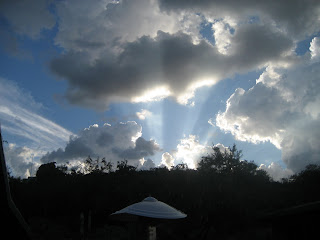Becoming a certified yoga instructor
 Yoga is said to help with stress relief, posture, flexibility, weight management and more. Maybe that is why more than 30 million people in the U.S. practice yoga taught by 70,000 certified teachers, according to a 2005 estimate by NAMSTA. I can name quite a few people who are addicted. Many of us can practice, but teaching is a whole different story. My friend Chidimma Ozor (R in photo next to Brooke Boon) is a newly certified instructor who completed a 200-hour program from a registered yoga school. Her story of training entwined with her faith and dedication to yoga inspired me to share her story.
Yoga is said to help with stress relief, posture, flexibility, weight management and more. Maybe that is why more than 30 million people in the U.S. practice yoga taught by 70,000 certified teachers, according to a 2005 estimate by NAMSTA. I can name quite a few people who are addicted. Many of us can practice, but teaching is a whole different story. My friend Chidimma Ozor (R in photo next to Brooke Boon) is a newly certified instructor who completed a 200-hour program from a registered yoga school. Her story of training entwined with her faith and dedication to yoga inspired me to share her story.“I started practicing yoga last year in August and the type of student I am – I went to my local Borders to pore through the entire ‘Yoga’ section!” Ozor said. She told me after much comprehensive reach she decided on Holy Yoga. “It [Holy Yoga] is not watered down yoga by any stretch of the imagination just because of its inclusion of faith. And it’s not a religion either. But rather, Holy Yoga encourages participants to use their time on the mat as a time of worship and deep spirituality,” Ozor explains.
Brooke Boon founded Holy Yoga and started Ozor on her path to certification with a 9-week session of 2-2 ½ hour conference calls referred to as Immersion. “Our calls consisted of meditation and prayer,” Ozor said, “Because we were all over the country we used a web-based conference system to see the poses on our computers/laptops.”
Ozor finished her training at a week-long retreat at the COD ranch in Oracle, Arizona. “One word that I used to explain it – and honestly it doesn’t give that time justice – is amazing,” Ozor said. During this week she says she hiked with other campers, participated in Bible study, did two workshops a day, and – among many other things- learned about sequencing and the flow of a class and how to select music. The retreat finished with her teaching a class. “To conclude the course, I had to prepare a 15 minute class to teach my peers as well as evaluate their classes plus I had to pass the final exam – which I did.”
So, after successfully completing her 200-hour training and final exam at the COD ranch, what advice does Ozor have for someone who is on the fence about embarking on this training? “Make sure that it is what you really want to do – it’s a lot of work.” Ozor said. “And even if you aren’t interested in teaching or just not ready for that at the present time, obtaining a yoga certification has the ability to give any participant a deeper understanding of yoga and spirituality. I would say go for it, what do you have to lose?”
Yoga is not a competitive sport. It is a sport where you can stop and regain your thoughts and catch your breath if you need to. Ozor says it is an inclusive way to be active which can be done by anyone with an open mind and the ability to listen. “There are so many modifications, so if someone comes and says they can’t run because their knees are bad, they are able to participate in a gentle yoga practice with a slightly different variation or modification that is respectful of that injury,” Ozor said.
Simply summarized, the Yoga Alliances’ 200 hour program includes 100 hours of techniques/training practice, 25 hours of teaching methodology, 20 hours of anatomy and physiology, 30 hours of yoga philosophy/lifestyle and ethics for yoga teachers, 10 hours of practicum and the remaining 15 hours to be divided as the school decides.
If you have tried yoga and do not like it, Ozor encourages you to give it another shot. She says she hated it at first, but returned 6 months later to a totally different experience: “When I was ready to practice, then my mind was open to receive something different and I was able to enjoy the practice.”
Labels: Brooke Boon, Certied Yoga Instructor, COD ranch, Holy Yoga, RYS, yoga




